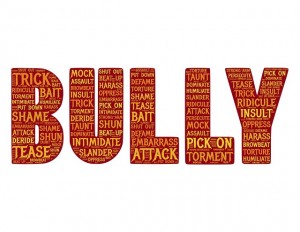
If you were to ask your clients what bullying is, some would identify events where they felt violated or pushed around by others. Some would recall an incident that made them feel targeted by others. Still some would think of specific people with whom they had negative experiences. Many would probably think back to that school bully. We’ve all experienced bullying and can say something about it, but it’s not easy to define it. It has a source. It has consequences. It has patterns.
Bullying isn’t a problem that exists in schools and children’s lives only. It is a problem that is very much present in the adult world. Anyone is capable of bullying, regardless of age, maturity, beliefs, or moral values. “Sometimes it looks different or is called by different names: sexual harassment, stalking, workplace aggression, or scapegoating. But like in childhood, bullying is one person controlling or harming someone else by use of power.” (Harmon, 2012) As counsellors and psychotherapists, we deal mostly with the aftermath of the abuse.
My personal and professional experiences have taught me that bullying is not always conscious. Still, at the heart of it, there’s a drive to manipulate and dominate another for one’s own purpose. It can be a desire to be in control, an expression of one’s profound insecurity, a reliving of relationship patterns learned in childhood. There can be as many purposes as there are bullies, but all acts of bullying have common denominators: the damage they can cause and the means they use. The common denominators are also the key to understanding how to withstand the assault and break free.
This post is the first of a series of posts in which I will attempt to dissect bullying. We will look at what it is, what it does, and what you can do about it. My hope is that this will shed some light on some of your clinical cases. The majority of the information I use is inspired by Marie-France Hirigoyen’s book: Le harcèlement moral: la violence perverse au quotidien.
In order to help us understand better the nature of bullying, I will portrait bullying in the life of adults in the extreme. In reality, bullying can sometimes be so subtle that we don’t even notice that it is happening. And yet, the pillars of bullying are the same in the subtle acts as in the openly aggressive ones. Acts of bullying can be subtle and therefore difficult to pick up on or identify… unless you know what to look for.
Harmon, J. (2012). 6 Steps for Dealing with Adult Bullies. Psych Central. Retrieved on July 23, 2014, from http://blogs.psychcentral.com/your-life/2012/05/6-steps-for-dealing-with-adult-bullies/
Delisle, Jonathan. LightHouse Counselling. The Reality of Bullying. https://lighthousecounselling.wordpress.com/2014/08/29/the-reality-of-bullying/
Hirigoyen, M.-F.; Le harcèlement moral : la violence perverse au quotidien; Éditions La Découverte et Syros, Paris, 1998; ISBN :978-2-266-22277-8
*The views expressed by our authors are personal opinions and do not necessarily reflect the views of the CCPA